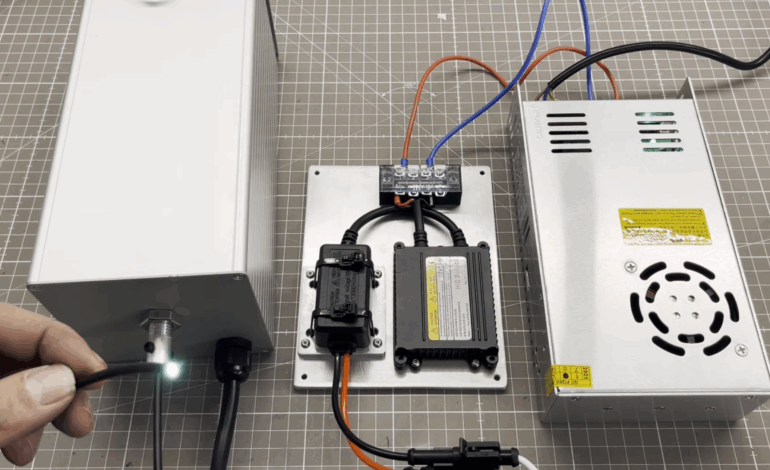Innovator Builds Versatile Xenon Lamp for Enhanced Spectroscopy

A new approach to spectroscopy has emerged with the creation of a xenon lamp designed to enhance the accuracy of wavelength calibration. Innovator Markus Bindhammer recently showcased this development in a video, highlighting the lamp’s potential as a versatile light source for absorbance spectroscopy. The xenon bulb offers a broad spectrum of wavelengths, making it an ideal choice for both hobbyists and professionals in the field.
To calibrate a spectrometer effectively, it is essential to identify specific wavelengths by detecting characteristic peaks or dips in light. While many enthusiasts rely on mercury-vapor fluorescent lights, the xenon bulb presents a more adaptable alternative. One key advantage of using a xenon gas discharge is its ability to produce several characteristic spikes in the infrared region, expanding the utility of the light source.
Markus constructed his lamp using an H7 xenon bulb, commonly utilized in vehicle headlights. The design features a concave mirror positioned behind the bulb and a pair of converging lenses in front. These lenses focus the emitted light onto the end of a PMMA optical cable, which is particularly effective for transmitting ultraviolet light.
Construction and Design Elements
The assembly is held together with aluminum brackets, ensuring stability and durability. An aluminum pipe, sectioned to create a concave mirror, reflects the light efficiently. The entire configuration is housed within an aluminum case, featuring a fan at one end for cooling purposes. To prevent unwanted light interference, a light trap covers the fan’s outlet.
Although Markus has yet to test this new light source with his custom-built spectrometer, initial observations suggest it should perform well. The combination of a xenon bulb and reflective components appears promising for achieving accurate spectral readings.
This innovative setup offers a glimpse into the capabilities of amateur spectroscopy, but it also opens the door to comparisons with existing commercial scientific light sources. As hobbyists continue to experiment and create, the field of spectroscopy is poised for advancements that could enhance both research and practical applications.
The exploration of such technologies underscores the importance of accessible scientific tools for enthusiasts and professionals alike, fostering a community of innovation and discovery.






